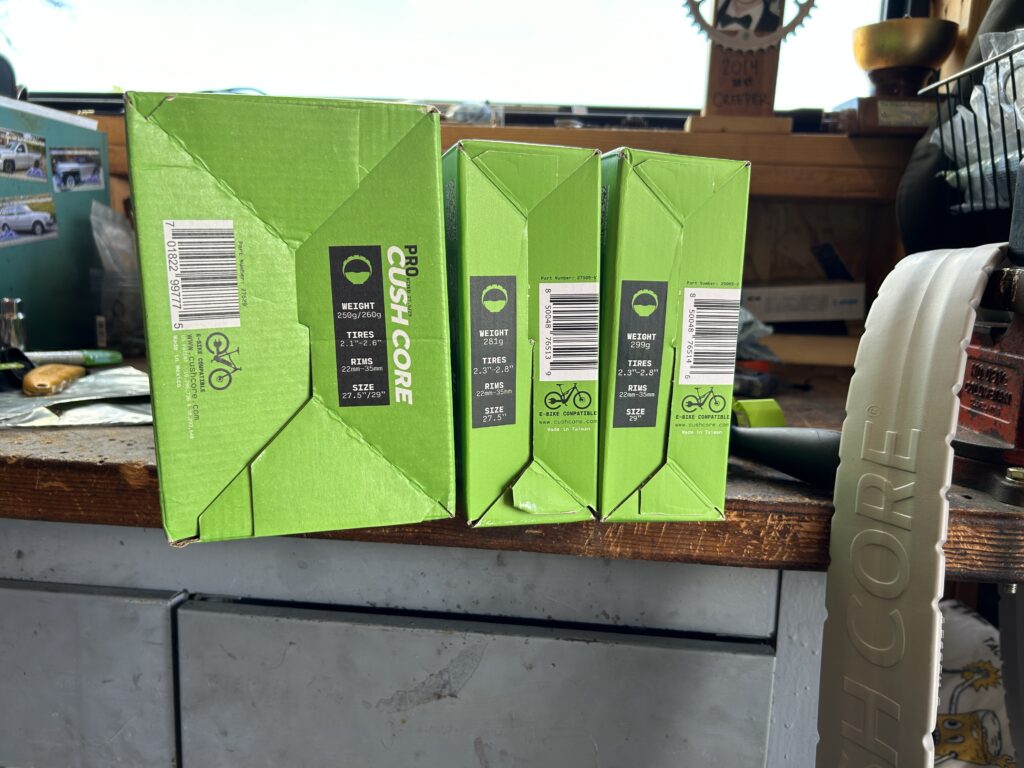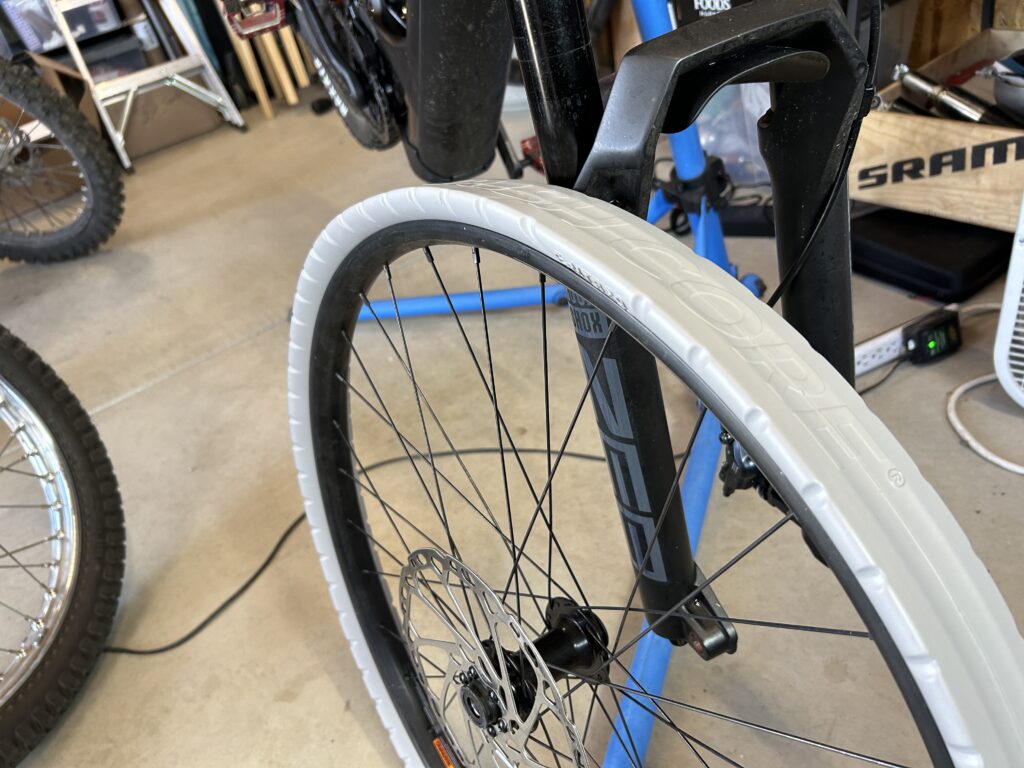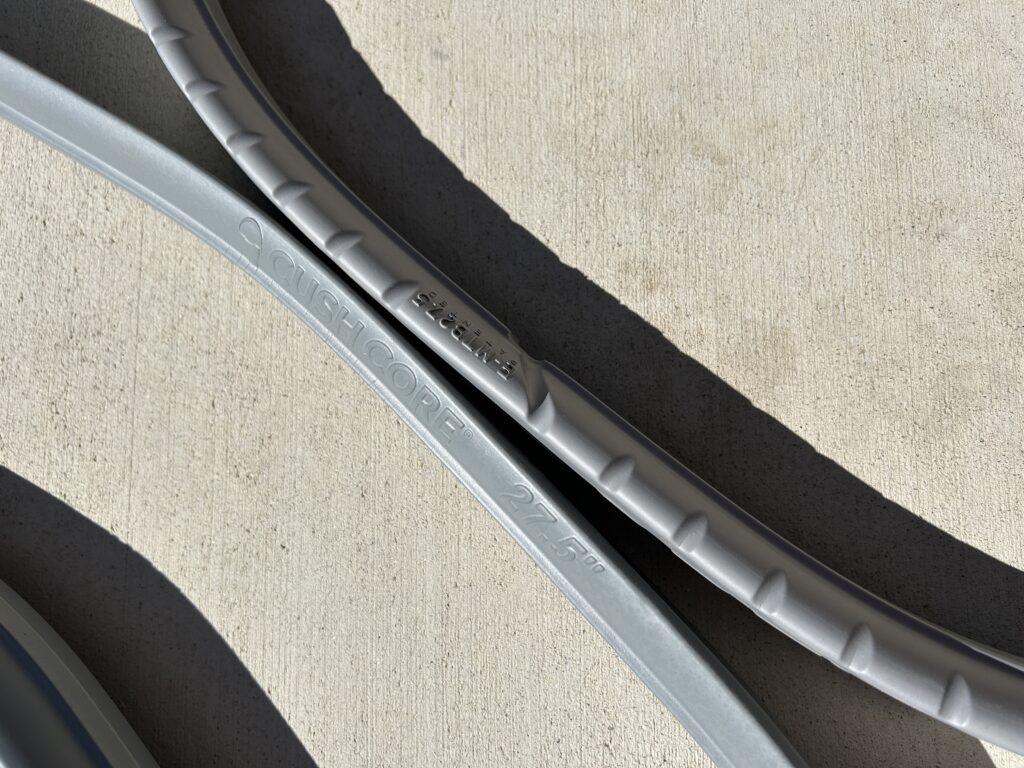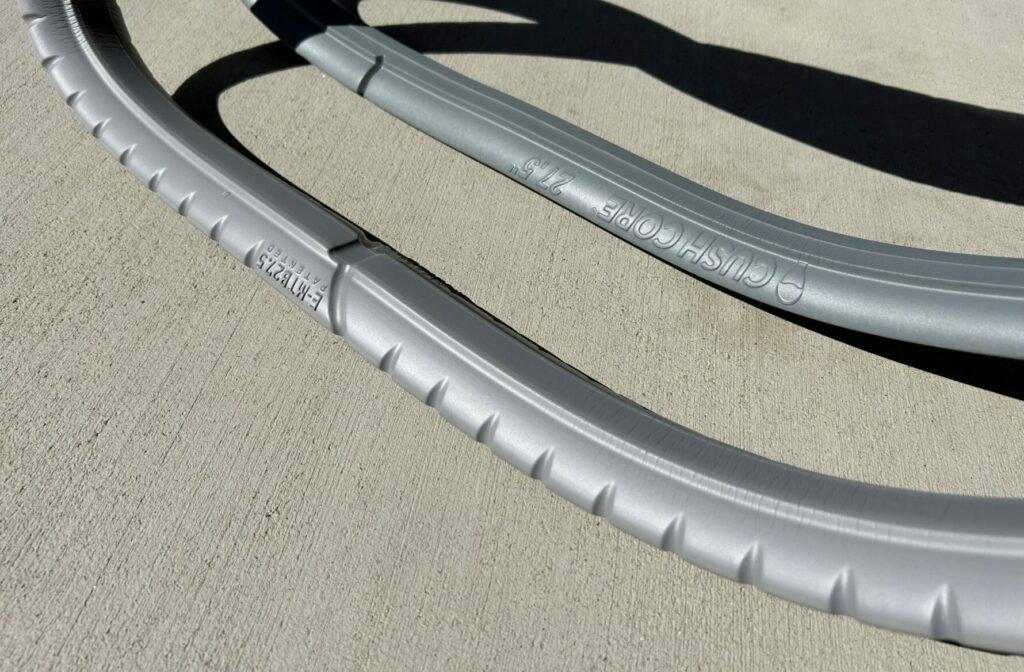In a matter of days after setting up my Turbo Levo test rig, I put a sizable dent in the rear rim on one of the many rocky trails I like to haunt. Yep, I probably should have sourced tire inserts before I even unboxed this bike.
So, fearing more damage, I reached out to the good folks at CushCore. It just so happened that they had a new E-MTB specific tire insert in the works — what good fortune! Better still, I had two bikes in the test stable: the aforementioned Levo, and a Cannondale Moterra Neo LT. These bikes are similar enough to present an opportunity to test the new CushCore back-to-back with the tried-and-true CushCore Pro.
After a summer of riding both options, I can perceive a difference in ride quality, but it’s nuanced. I have preferences, but my loyalties are split between the CushCore E-MTB and Pro options. So, let’s try to unpack the details.
Why Every E-Bike Needs Tire Inserts
As I alluded to earlier, it was a bad idea to do any sort of serious E-MTB riding without tire inserts … CushCore, Vittoria, Rimpact, whatever. Just put some foam in those tires. Doing so will afford a lot of protection from punctures and rim damage. It will also greatly improve the bike’s handling and traction.
E-bikes are heavier, which puts more force into the tires and rims upon impact. Frankly, I think the tire industry is still figuring out how to design tires for E-MTB, and there are a variety of philosophies out there. Wherever you stand on the various casing, bead, and rubber durometer options, tire inserts compensate for any shortcomings (or poor line choices). I have punctured tires with inserts, but it is rare. I have never irreparably damaged rims with inserts, but to be fair, I’m 150 pounds soaking wet.
Just put some foam in those tires.
As for performance, both of my test bikes felt noticeably better as soon as I mounted CushCores. I was running lower pressure (18 PSI versus 22 PSI sans inserts), and that just quieted everything down once the trail got rough. The tires also felt very supportive on hard corners, again a notable characteristic given the extra weight pushing into those tire sidewalls.
Notably, the folks at CushCore convinced me to run the inserts front and rear, and I couldn’t be happier with that decision. In the past, with Amish bikes, I would only run a rear CushCore, given the weight balance between wheels. My contact at CushCore posed this hypothetical question to me, when I said I’d likely only run an insert out back: “You wouldn’t run only rear suspension, would you?” No, but these are inserts, right? They are, and they too contribute to the bike’s suspension.
To get a little personal, I’m aging. This summer, I started to feel hand and finger numbness on rough descents. It’s a bummer. But with front CushCore inserts (on either bike), my hands felt drastically better. It makes a difference. And the extra weight is trivial since we’re on e-bikes.

Comparing the CushCore Pro and E-MTB Inserts
With all of that prelude behind us, here’s the real comparison. This was all planned out, by the way; the point is that either of these inserts are a massive upgrade for any e-bike, and priced regularly at $150-160, they’re an affordable upgrade to boot.
Out of the box, the E-MTB inserts are noticeably thicker, and they have notches all the way around the edges. The Pro insert is smooth and doesn’t take up as much volume in the tire. Naturally, that makes the E-MTB insert about 30-40 grams heavier apiece, but that’s trivial in the context of a 50-pound full-power e-bike. Installation was similar for both models. With 2.6” tires, there’s plenty of room to work with, and using a CushCore Bead Dropper tool, I made short work of four tires.

A few caveats before we talk about ride quality. The Pro inserts were mounted on a Specialized Turbo Levo Comp Carbon. The E-MTB inserts were on the Cannondale Moterra Neo LT Carbon. Clearly, they are different bikes, with different suspension, and different tires. I honestly do not have the time to do a pure scientific comparison. However, I rode both bikes sans-inserts before this test; I rode many of the same trails; I rode the same tire pressure on both bikes. I’m trying, people!
With that in mind, my overall takeaway is that the E-MTB inserts feel more damped, and the Pro inserts feel more lively. With the E-MTB inserts, it’s like putting in earplugs at a loud concert. With the Pro inserts, you get most of the trail feedback, and the bike isn’t quite as glued to the dirt, for better or for worse.
If you ride super blown-out, loose, rocky trails, I’d highly recommend the E-MTB insert. Honestly, it would be great on an analog downhill or enduro bike. If you like popping off little jumps and styling it out, maybe the Pro’s demeanor is more fitting.
Practically speaking, the Pro is rated down to 2.1” tires, while the E-MTB only fits down to 2.3” tires. So, if you suspect you’ll run narrower tires, that might be a factor.

Conclusion
If I was stranded on a desert island with only one set of inserts for my e-bike, I’d probably opt for the E-MTB insert. I like that it offers a bit more rim protection with its thicker shape, and on the whole, I want my bike to feel as smooth and quiet as possible. It’s fitting for a long travel e-bike that carries some weight, and that moto feel is familiar to me. It gives me confidence.
